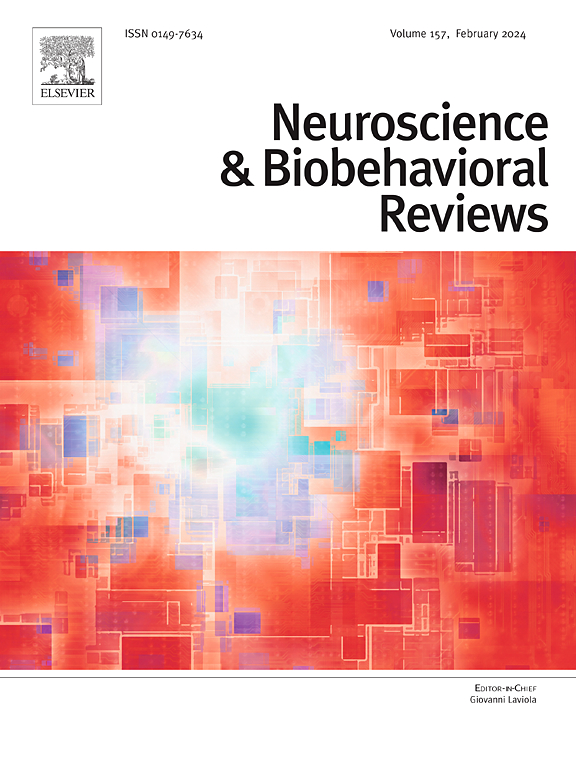From prodromal stages to clinical trials: The promise of digital speech biomarkers in Parkinson's disease
IF 7.5
1区 医学
Q1 BEHAVIORAL SCIENCES
引用次数: 0
Abstract
Speech impairment is a common and disabling symptom in Parkinson's disease (PD), affecting communication and quality of life. Advances in digital speech processing and artificial intelligence have revolutionized objective speech analysis. Given the complex nature of speech impairment, acoustic speech analysis offers unique biomarkers for neuroprotective treatments from the prodromal stages of PD. Digital speech biomarkers can monitor levodopa-induced motor complications, detect the effects of deep brain stimulation, and provide feedback for behavioral speech therapy. This review updates the mechanisms underlying speech impairment, the impact of speech phenotypes, and the effects of interventions on speech. We evaluate the strengths, potential weaknesses, and suitability of promising digital speech biomarkers in PD for capturing disease progression and treatment efficacy. Additionally, we explore the translational potential of PD speech biomarkers to other neuropsychiatric diseases, offering insights into motion, cognition, and emotion. Finally, we highlight knowledge gaps and suggest directions for future research to enhance the use of quantitative speech measures in disease-modifying clinical trials. The findings demonstrate that one year is sufficient to detect disease progression in early PD through speech biomarkers. Voice quality, pitch, loudness, and articulation measures appear to capture the efficacy of treatment interventions most effectively. Certain speech features, such as loudness and articulation rate, behave oppositely in different neurological diseases, offering valuable insights for differential diagnosis. In conclusion, this review highlights speech as a biomarker in tracking disease progression, especially in the prodromal stages of PD, and calls for further longitudinal studies to establish its efficacy across diverse populations.
从前驱期到临床试验:帕金森病数字语音生物标记的前景。
言语障碍是帕金森病(PD)常见的致残症状,影响交流和生活质量。数字语音处理和人工智能的进步彻底改变了客观语音分析。鉴于言语障碍的复杂性,声学言语分析为帕金森病前驱期的神经保护治疗提供了独特的生物标记。数字语音生物标志物可以监测左旋多巴诱发的运动并发症,检测深部脑刺激的效果,并为行为语音治疗提供反馈。本综述更新了言语障碍的内在机制、言语表型的影响以及干预措施对言语的影响。我们评估了有前景的帕金森病数字语言生物标记的优势、潜在弱点和适用性,以捕捉疾病进展和治疗效果。此外,我们还探讨了将帕金森病语音生物标记物转化为其他神经精神疾病的潜力,为运动、认知和情感提供见解。最后,我们强调了知识差距,并提出了未来研究的方向,以加强定量言语测量在疾病改变临床试验中的应用。研究结果表明,通过言语生物标志物检测早期帕金森病的疾病进展只需一年时间。语音质量、音高、响度和发音测量似乎能最有效地捕捉治疗干预的疗效。某些语音特征,如响度和发音速度,在不同的神经系统疾病中表现相反,这为鉴别诊断提供了宝贵的见解。总之,本综述强调语言是跟踪疾病进展的生物标志物,尤其是在帕金森病的前驱阶段,并呼吁进一步开展纵向研究,以确定其在不同人群中的疗效。
本文章由计算机程序翻译,如有差异,请以英文原文为准。
求助全文
约1分钟内获得全文
求助全文
来源期刊
CiteScore
14.20
自引率
3.70%
发文量
466
审稿时长
6 months
期刊介绍:
The official journal of the International Behavioral Neuroscience Society publishes original and significant review articles that explore the intersection between neuroscience and the study of psychological processes and behavior. The journal also welcomes articles that primarily focus on psychological processes and behavior, as long as they have relevance to one or more areas of neuroscience.

 求助内容:
求助内容: 应助结果提醒方式:
应助结果提醒方式:


